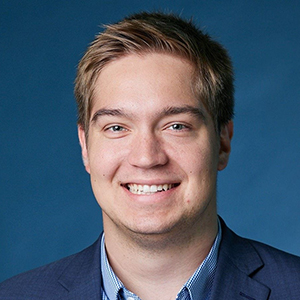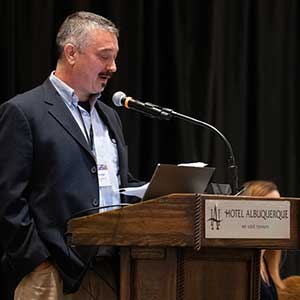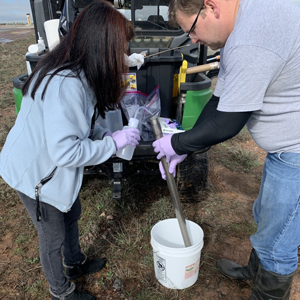NIEHS scientists and grant recipients study how environmental factors affect human health, building knowledge that is then shared with the public and policymakers. Sometimes, that research results in technological breakthroughs. Here are examples from 2019.
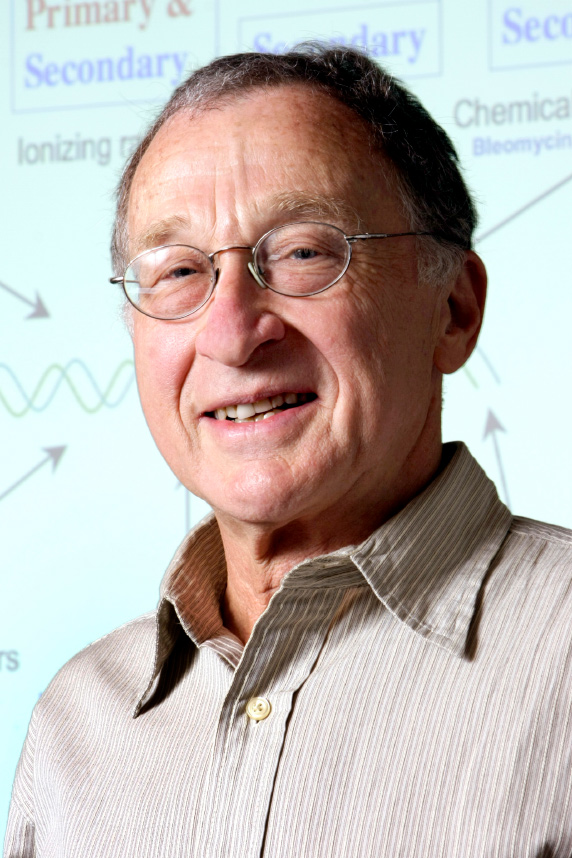 Resnick leads the Chromosome Stability Group, where he studies, among other things, the p53 gene, which is important for controlling cell cycles. Mutations in that gene can lead to cancer. (Photo courtesy of Steve McCaw)
Resnick leads the Chromosome Stability Group, where he studies, among other things, the p53 gene, which is important for controlling cell cycles. Mutations in that gene can lead to cancer. (Photo courtesy of Steve McCaw)Tackling disease, chemical warfare, and contamination
- Michael Resnick, Ph.D., of the Genome Integrity and Structural Biology Lab, filed a patent application related to a treatment for respiratory syncytial virus (RSV). His team discovered the biological mechanisms that can increase RSV intensity and cause hospitalization. Patent approval can take several years, but this is an important step toward improving therapeutics.
- University of Colorado School of Medicine professors Carl White, M.D., and Livia Veress, M.D., received a patent for a procedure that could help in a chemical warfare scenario. They developed a therapeutic approach to increase survival rates following exposure to sulfur mustard, often called mustard gas, and similar agents. Funding came from the National Institutes of Health Countermeasures Against Chemical Threats (CounterACT) program, in which NIEHS participates. Sri Nadadur, Ph.D., a health scientist administrator at the institute, directs CounterACT pulmonary toxicity projects such as this one. He said the professors’ work is being developed further with financial support from the Biomedical Advanced Research and Development Authority, which is part of the U.S. Department of Health and Human Services.
- NIEHS Small Business Innovation Research (SBIR) grantees Daojing Wang, Ph.D., and Pan Mao, Ph.D., launched the biotechnology company Newomics in 2011. SBIR support led to a 2019 patent for a unique method to improve analysis of biological samples by mass spectrometry and thereby enhance detection of early indicators of disease.
- Superfund Research Program (SRP) funding resulted in patents pending for “A Multi-Compartment Device Containing Human Three-Dimensional (3D) Microtissues for Toxicity Testing” and a “Water Purification Device and Method of Decontaminating a Water Supply.” The inventors hail from Brown University and the University of Kentucky, respectively.
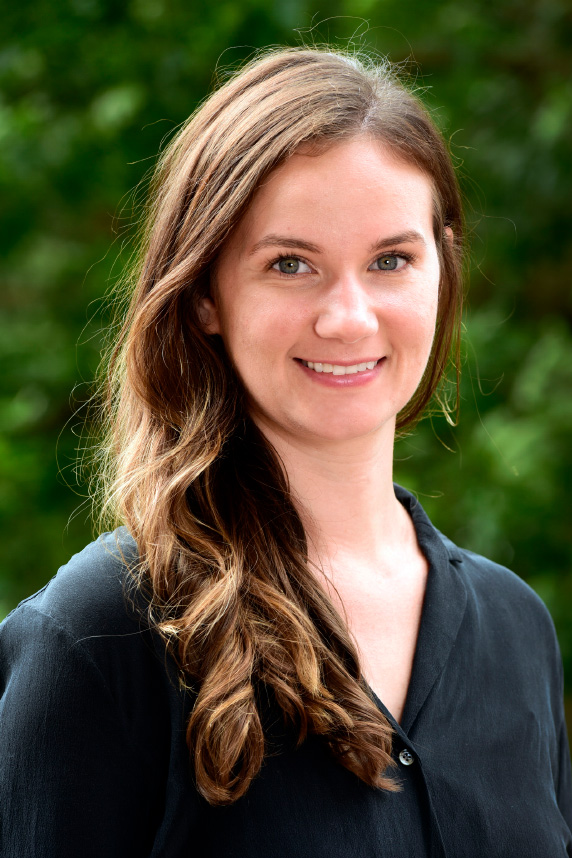 Soucek negotiates a variety of contracts and collaborative agreements, helping NIEHS in-house scientists connect with outside organizations. (Photo courtesy of Steve McCaw)
Soucek negotiates a variety of contracts and collaborative agreements, helping NIEHS in-house scientists connect with outside organizations. (Photo courtesy of Steve McCaw)“A long-term game”
When it comes to turning NIEHS research into innovation, patents — which can be expensive and time-consuming — are only part of the story, leaders say. Fostering outside partnerships and providing scientists tools they need to exploit good ideas are equally important.
“This is a long-term game,” said Sharon Soucek, Ph.D., head of the Office of Technology Transfer (OTT), which helped Resnick file his patent application. “These developments can take years to materialize.” They also can take a little bit of luck, as scientists can begin with one idea and discover something else entirely.
William Suk, Ph.D., director of SRP, referred to 2019 research from Brown University as an example. Scientists received funding from his program to study how nanomaterials such as graphene can protect humans from exposure to hazardous chemicals. Along the way, they found that the substance can be used as a shield to block mosquitoes.
The happenstance involved in such projects is not lost on Soucek. “We have mechanisms in place so that scientists can collaborate and develop technologies — any of their ‘Aha’ moments,” she said. Some of those mechanisms involve confidentiality or material transfer agreements for sharing items such as genetically altered mouse strains, which are a form of intellectual property.
Soucek pointed out that one of her noteworthy 2019 tasks involved the institute’s agreement to assist in the Apple Women’s Health Study. “OTT serves as a liaison between researchers here and outside parties in academia and industry,” she said.
Entrepreneurial mindset
 In addition to overseeing the small business programs, Shaughnessy works on projects related to mutagenesis and environmental exposure research. (Photo courtesy of Steve McCaw)
In addition to overseeing the small business programs, Shaughnessy works on projects related to mutagenesis and environmental exposure research. (Photo courtesy of Steve McCaw)“NIH [National Institutes of Health] supports commercialization of research discoveries through technical assistance programs and efforts to help developers find strategic partners and other investors,” said Daniel Shaughnessy, Ph.D., a health scientist administrator in the Division of Extramural Research and Training. He works with Lingamanaidu Ravichandran, Ph.D., to manage the SBIR and Small Business Technology Transfer programs.
“One problem is that academic researchers often don’t have a business and commercialization background,” noted Shaughnessy. “So, these programs can help educate them or give them access to business assistance so they can know their market, protect their intellectual property, and understand some of the challenges they may face in scaling up the manufacture of a product or technology.”
(Jesse Saffron, J.D., is a technical writer-editor in the NIEHS Office of Communications and Public Liaison.)







